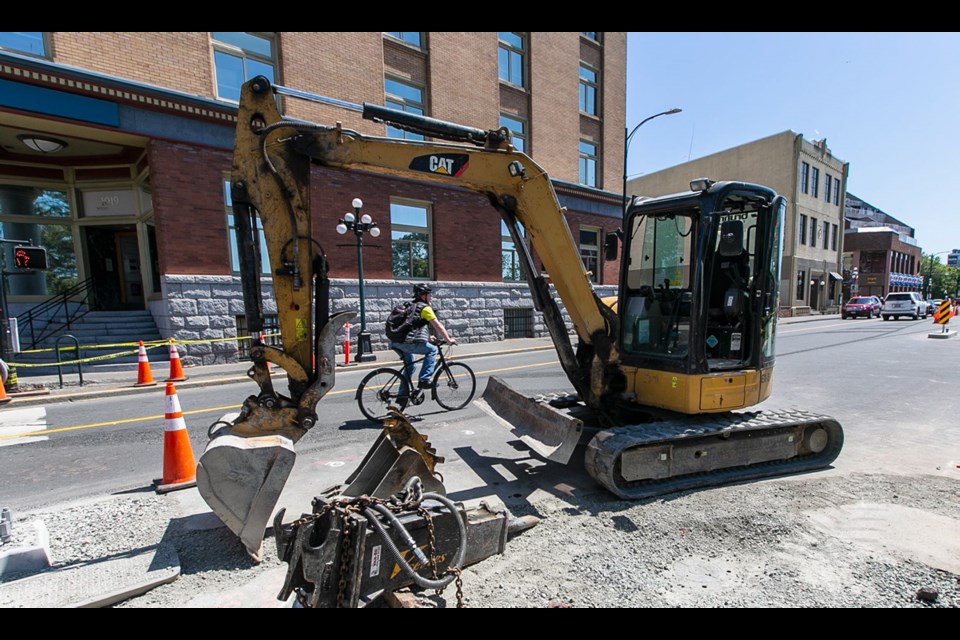Traffic changes coming to accommodate the new bike lanes being built on Wharf and Humboldt streets have the city looking to hire a communications consultant to plan a year-long road-user awareness campaign.
Major changes include construction of separated bike lanes along Wharf, introduction of a scramble crosswalk at Government Street where it meets Humboldt, and construction of a new plaza at Humboldt on the east side of Douglas Street, when what is now a five-corner intersection is reconfigured into a four-way intersection as Humboldt is blocked off.
The request for proposals notes the new leg of the cycling network will include new road markings, intersection changes, vehicle and pedestrian movement changes, new parking and loading zone locations, changes to transit stops, and protected bike lanes.
ICBC, the Capital Regional District and the province don’t have current campaigns or educational materials about these types of road features, said Sarah Webb, city manager of transportation planning and development.
“We are developing tailored local information so people can learn about the changes, be prepared and understand how to use them safely,” she said.
For example, pedestrians will have to learn to use the new scramble crosswalk at Government Street, Humboldt and Wharf. Cyclists will get tips on how to transition onto the Wharf Street bike lane from the Johnson Street Bridge multi-use deck, and how to make the connection between the new Wharf Street lanes and the Pandora Avenue and Fort Street bike lanes.
This $4-million leg of the cycling network is slated for official opening in August.
The information campaign is to run up to a year after the project is completed.
Other cities, such as Calgary, Vancouver, New York and Seattle, have done similar rollouts, Webb said.
The consultant is also expected to hold an opening celebration to mark the completion of the project.
The city opened the first leg of the cycling network — a two-way bike lane on Pandora between Cook and Wharf streets — in April 2017, at a cost of $3.4 million.
The second leg, on Fort Street between Cook and Wharf, opened in May at a cost of $3.27 million.
Cycling lanes are to continue on Humboldt east of Douglas to Vancouver Street, but as a shared roadway rather than a separated bike lane.
Under the shared-roadway concept, motor-vehicle traffic is reduced through a variety of measures to about 1,000 vehicles a day, so cyclists can safely share the road with other traffic.
Planning is underway for the next leg — transforming Vancouver Street from a north-south connector for motorists into a local roadway where pedestrians and cyclists have priority.
The street will be blocked to through motor traffic in at least two locations, where “street plazas” with trees and seating will be built.
At some intersections, cars will be restricted from turning onto Vancouver.
The goal is to reduce traffic on Vancouver Street to between 500 and 1,000 vehicles a day from current volumes, which range from about 5,600 to more than 6,200 vehicles daily.


